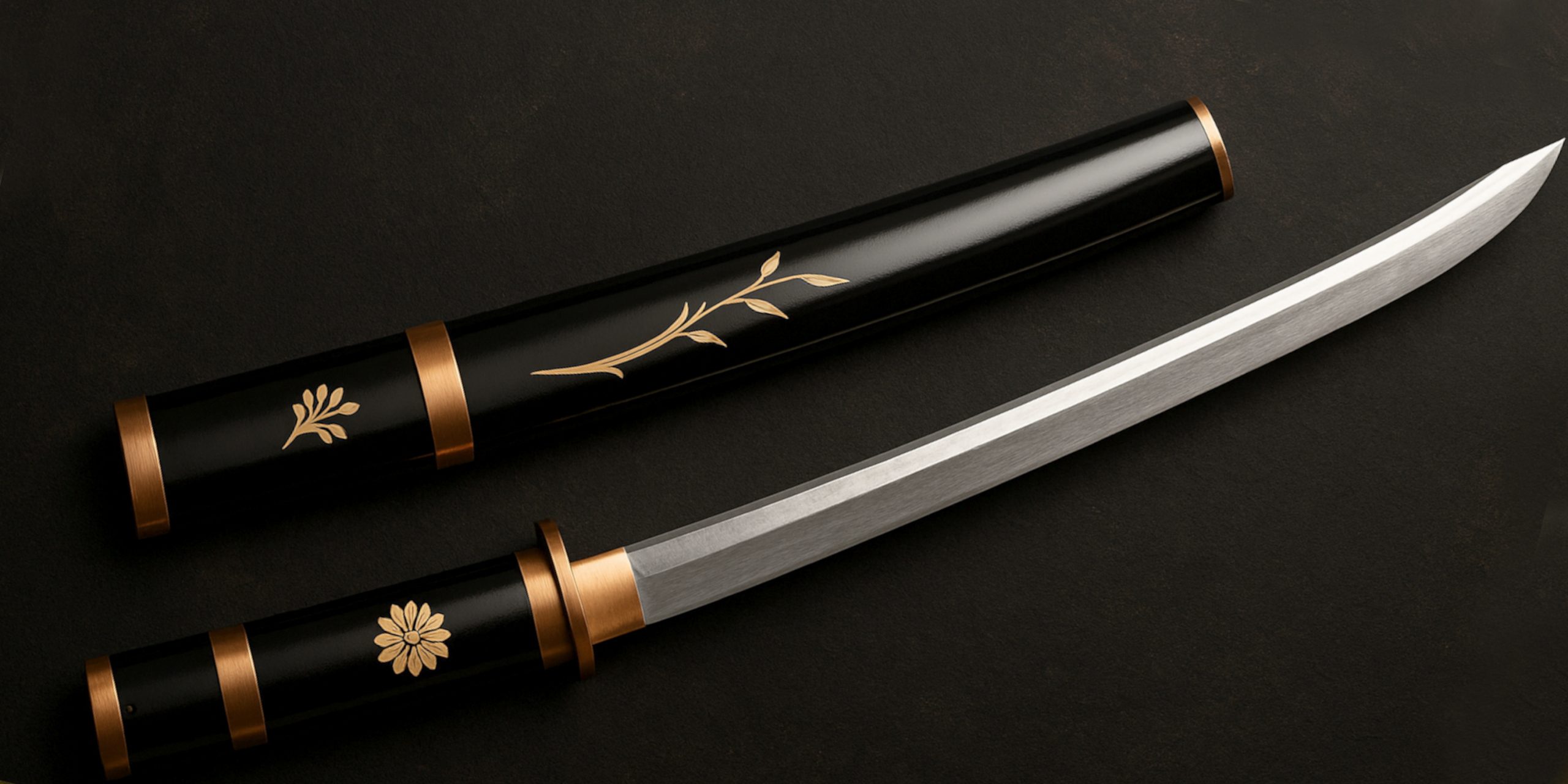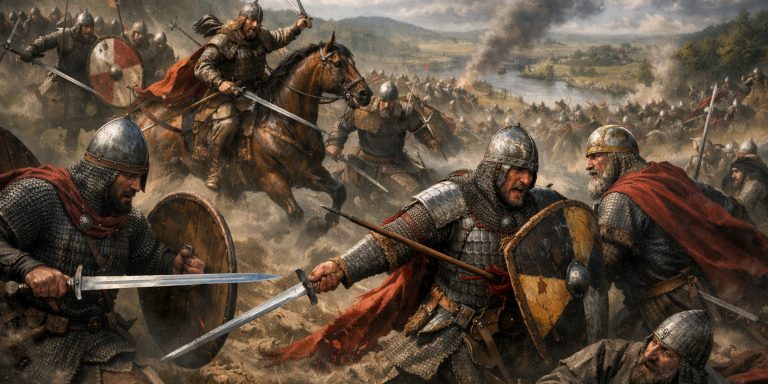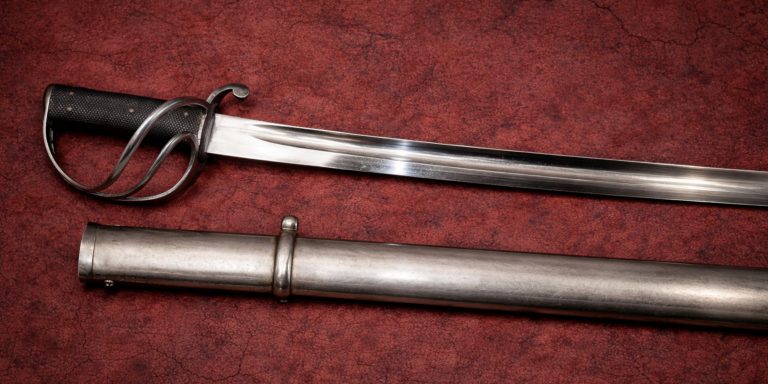
The Hwando is a traditional Korean sword primarily used during the Joseon dynasty. Known for its simplicity, utility, and elegant design, it served as the standard sidearm for military personnel. Though less renowned globally than the Japanese katana or Chinese dao, the Hwando played a vital role in Korean martial and cultural history.
Specifications
| Feature | Description |
|---|---|
| Blade Length | Typically around 70 cm; some wartime examples exceeded 90 cm |
| Blade Shape | Single-edged; slightly curved or nearly straight |
| Cross-Section | Triangular, pentagonal, hexagonal, or flattened styles |
| Hilt | Wooden, sometimes wrapped in cloth or shark skin; minimal cross-guard |
| Scabbard | Wooden, lacquered, fitted with suspension rings for belt or cord |
| Weight | Lightweight for portability and speed |
| Steel Type | Varies; some blades show partial hardening or heat treatment |
History and Evolution
- Goryeo Period Origins: The term “Hwando” appears in Goryeo records, with references to mass production and military distribution.
- Early Joseon: Swords were short and curved, suitable for infantry or light cavalry.
- 16th Century Warfare: During the Imjin War, longer versions were developed to counter samurai blades and increased battlefield threats.
- Post-War Revisions: After foreign invasions, Hwando design shifted back toward practicality, shortening again and adjusting fittings for ease of wear.
- Standardisation: Military manuals like Muyedobotongji and Muyesinbo featured the Hwando as a formalised weapon, codifying techniques and configurations.
- Late Joseon: Influences from Ming China and Manchu design led to modified fittings, especially in ceremonial variants.
Advantages and Disadvantages
Advantages:
- Lightweight and easy to carry
- Fast draw and good manoeuvrability
- Designed for one-handed combat, leaving the other hand free for shields or other tools
- Suspension rings allowed flexible wear across different military uniforms
- High-status versions demonstrated craftsmanship with gold, jade, or tortoiseshell
Disadvantages:
- Shorter reach compared to polearms or two-handed swords
- Less thrusting capability due to curved or flattened tips
- Less effective against heavily armoured opponents
- Heavily decorated versions less practical for combat
- Obsolete with the rise of firearms and artillery
Comparison with Similar Weapons
| Weapon | Similarities | Differences |
|---|---|---|
| Katana | Both are single-edged, curved, and worn as sidearms | Katana is longer, heavier, and often more curved; crafted with folded steel and visible hamon lines |
| Chinese Dao | Similar blade profile and battlefield function | Dao are generally heavier with wider blades; often feature different hilt and guard configurations |
| Korean Geom (double-edged) | Native Korean heritage; used in ritual or early military | Geom are straight, double-edged, and ceremonial; Hwando is curved, single-edged, and practical |
Legacy
- The Hwando is closely tied to Joseon military identity and features prominently in historical records and martial arts manuals.
- It appears in the Muyedobotongji, which still influences Korean martial arts today.
- Decorative and ceremonial Hwando swords have become important cultural heritage items.
- Swordsmithing traditions continue in Korea with modern replicas and historically inspired works.
- The Hwando is regularly showcased in Korean museums and cultural institutions.
Where to See the Hwando
South Korea:
- Suwon Hwaseong Museum – Holds examples of daemobogeom, elaborately decorated Hwando with sea turtle shells and lacquer finishes.
- Uibyeong Militia Museum – Features military-use Hwando and related arms from the late Joseon period.
- National Folk Museum of Korea – Displays a range of Korean edged weapons including Hwando variants.
International Museums:
- Hwando examples may appear in Asian arms collections in museums across the United States and Europe, particularly in collections focusing on East Asian warfare or military history.
Collector’s Guide
What to Look For
- Provenance: Documentation of origin, past ownership, and association with historical events adds considerable value.
- Blade Geometry: Authentic examples have cross-sections matching known historical types.
- Mountings: Original scabbards and fittings increase desirability, especially if intact.
- Decorative Features: High-ranking examples often used jade, silver, gold leaf, or tortoiseshell.
- Condition: Rust, pitting, and improper restoration can severely reduce value.
Price Range
| Type | Description | Estimated Value |
|---|---|---|
| Standard Issue | Modest condition, unadorned military sword | £500 to £1,500 |
| Decorated Civilian or Officer Variant | Lacquered, with inlays and suspension rings | £2,000 to £5,000 |
| Elite or Ceremonial Hwando | Gilded, carved, with rare materials | £7,000 to £20,000+ |
| Museum-Quality with Provenance | Fully intact, historical, traceable | £20,000+ (rare auctions) |
The Seven Swords Takeaway
The Hwando served as a dependable sidearm for Korean soldiers and officers. Its design reflects the changing realities of warfare in the Joseon period, function shaped by necessity, but not without grace. For historians, martial artists, and collectors, the Hwando remains a physical link to one of Korea’s most formative eras.



